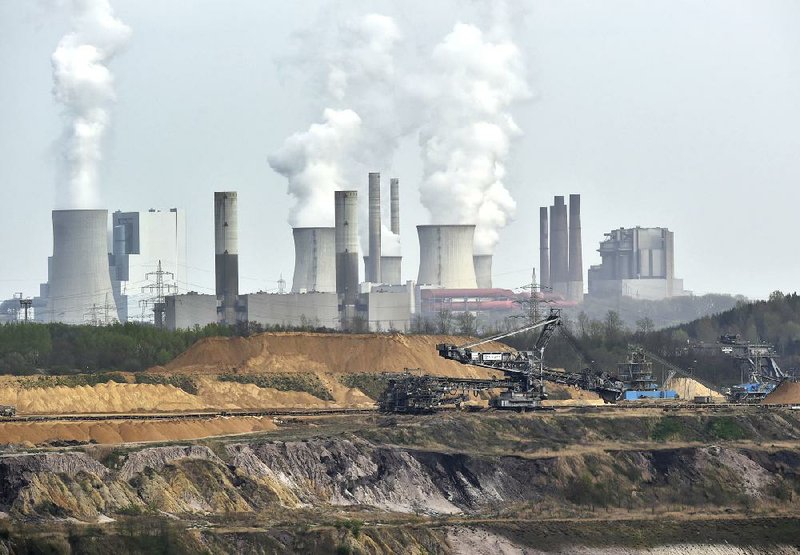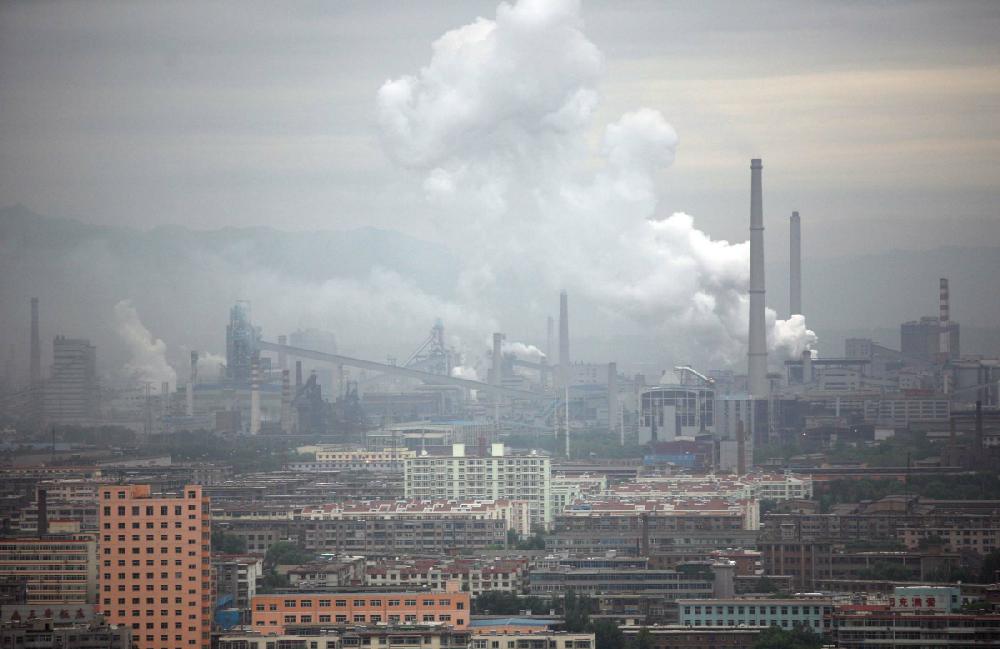GENEVA -- Carbon dioxide levels in the atmosphere reached a record high in 2013 as increasing levels of man-made pollution transform the planet, the United Nations weather agency said Tuesday.
The heat-trapping gases that scientists have blamed for the largest share of global warming rose to global concentrations of 396 parts per million last year. That is up 2.9 parts per million from the previous year, the biggest year-to-year change in three decades, the World Meteorological Organization said in an annual report.
The most recent concentration is 42 percent higher than before the Industrial Age, when levels were about 280 parts per million.
Based on the current rate, the world's carbon dioxide pollution level is expected to cross the 400 parts per million threshold by 2016, said World Meteorological Organization Secretary-General Michel Jarraud. Scientists and environmental groups have promoted 350 parts per million as a safe level, which was last seen in 1987.
CO2 emissions are growing mainly in China and other large developing countries as their economies expand. So far developed and developing countries have failed to reach a binding pact that would curb emissions globally. The goal of U.N. climate talks is to deliver such an agreement next year.
Concentrations of CO2 build up over time because it stays in the atmosphere for decades. So even if emissions stopped today, it would take many years before concentrations dropped significantly, experts have said.
Top climate scientists are now becoming increasingly skeptical that countries across the globe will meet the voluntary goals they set at the 2009 Copenhagen climate summit. That goal was to limit global warming to about 3.6 degrees Fahrenheit above pre-industrial levels.
Carbon emissions have so far lifted the Earth's average temperature about 1.4 degrees Fahrenheit since the Industrial Revolution, experts have said.
In a draft report last month, the United Nations' Intergovernmental Panel on Climate Change said it is looking more likely that the world will shoot past the Copenhagen goal, and by mid-century, temperatures will increase by about another 3.6 degrees Fahrenheit compared to temperatures from 1986 to 2005.
By the end of the century, that scenario will make temperatures about 6.7 degrees warmer than current levels, it said.
"We know without any doubt that our climate is changing and our weather is becoming more extreme due to human activities such as the burning of fossil fuels," Jarraud said. "Time is not on our side, for sure."
To address the challenge, U.N. Secretary-General Ban Ki-moon has invited heads of state and other leaders to a Sept. 23 climate change summit in New York on the sidelines of the annual U.N. General Assembly. President Barack Obama has said he will attend to help spur new commitments from governments, industry and civil groups for reducing greenhouse gas emissions ahead of next year's global climate talks in Paris.
The World Meteorological Organization report Tuesday said the rate of ocean acidification, which comes from added carbon absorbed by oceans, "appears unprecedented at least over the last 300 million years."
Between 1990 and 2013, carbon dioxide and other gas emissions caused a 34 percent increase in the warming effect on the climate, the report said.
The warming effect, or "radiative forcing," measures the net difference between the sunlight that the Earth absorbs and the energy it radiates back into space. More absorption leads to higher temperatures.
After carbon dioxide, methane has the biggest effect on climate. Atmospheric concentrations of methane reached a new high of 1,824 parts per billion in 2013, up 153 percent from pre-industrial levels of about 700 parts per billion.
About 40 percent of the methane comes from natural sources such as termites and wetlands, but the rest is due to cattle breeding, rice agriculture, fossil fuel burning, landfills and incineration, according to the agency.
Information for this article was contributed by Karl Ritter of The Associated Press and by staff members of Bloomberg News.
A Section on 09/10/2014

